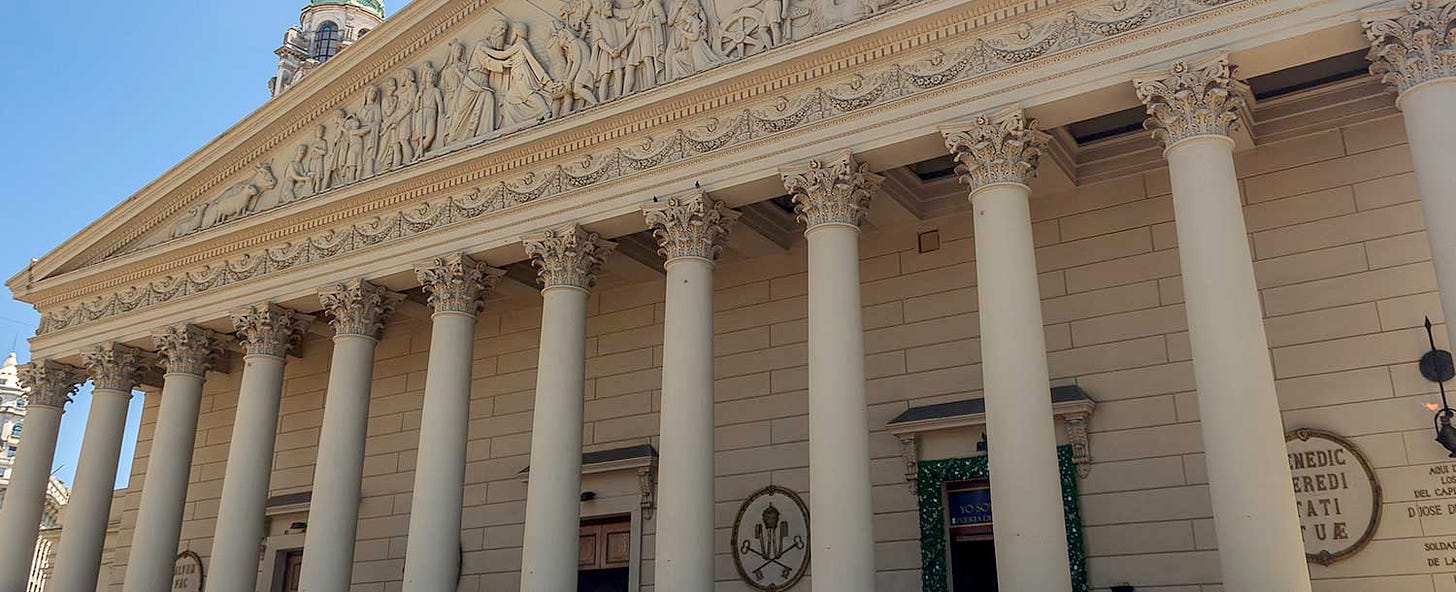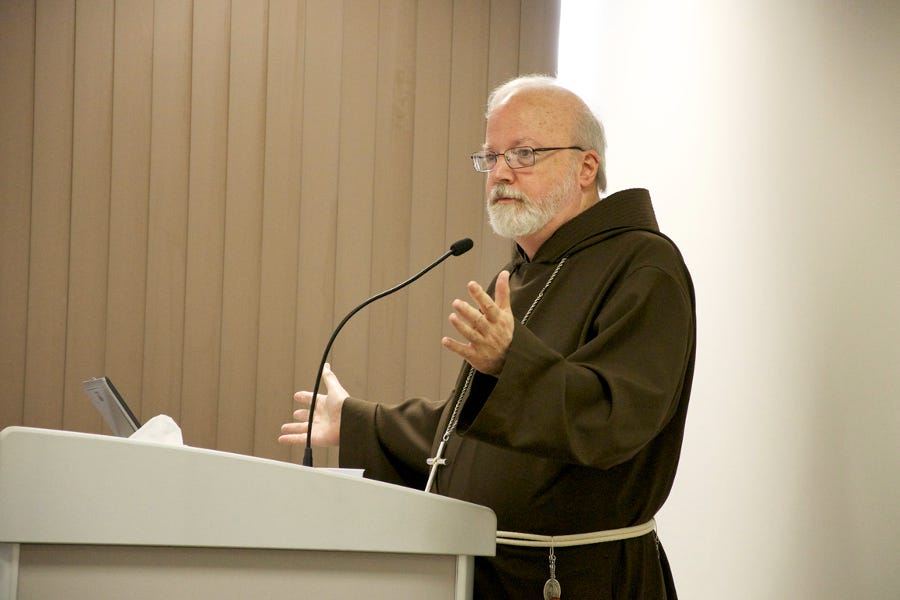Pope Francis last week appointed three new auxiliary bishops for the Archdiocese of Buenos Aires, where he served as archbishop before becoming pope in 2013.
The June 19 appointments bring the archdiocese’s episcopal headcount to seven auxiliaries — eight bishops total, including the archbishop.
But Buenos Aires might not remain so well stocked for very long. And the slate of new appointments could point to the developing future of the Argentine episcopacy, especially after a series of failed nominations in the Diocese of Mar del Plata and the recent resignation of the Archbishop of La Plata, after just eight months in charge.
The new auxiliaries
The pope last week appointed Sergio Iván Dornelles, Pedro Bernardo Cannavó and Alejandro Daniel Pardo as new auxiliary bishops of Buenos Aires — all three men are under the age of 50 years old.
Before them, the archdiocese already had Bishops Gustavo Carrara, Ernesto Giobando, Joaquín Sucunza and Alejandro Giorgi as auxiliaries.
On paper, Buenos Aires’ tally of seven auxiliary bishops for an archdiocese with 3 million Catholics is unusually high, but not unheard of in Latin America.
Of course, some large Latin American dioceses have comparably few auxiliaries.
The Archdiocese of Lima, Perú, has four auxiliaries for 2.2 million Catholics, and Caracas, in Venezuela, has three auxiliaries for 2.4 million Catholics. The Archdiocese of Bogotá, the capital of Colombia, has only two auxiliaries for 4 million Catholics. The Archdiocese of México has six auxiliaries for almost 5 million Catholics.
But others have a relatively greater number. Río de Janeiro has nine auxiliaries for 3.3 million Catholics. Santiago de Chile has seven for 4 million Catholics.
So while seven auxiliary bishops for an archdiocese like Buenos Aires may be a bit higher than average, it is not entirely unusual.
The three new bishops have until now served as priests in Buenos Aires and were all ordained by then-Cardinal Jorge Mario Bergoglio.
In addition to bearing Pope Francis’ stamp from ordination, all three also share pastoral experience in the slum districts of Buenos Aires. So-called villero priests in Argentina are widely respected for their commitment to social justice and evangelization on the social peripheries, but often controversial due to their perceived closeness to Peronism, the political movement of the Argentinian populist left.
Current Buenos Aires Archbishop Jorge García Cuerva used to be a villero priest, as was Bishop Gustavo Carrara, one of his current auxiliaries.
During his time as archbishop, then-Cardinal Bergoglio was a notable supporter of villero priests, often pushing their promotion as bishops around the country.
Why so many?
There are two possible explanations for the appointment of the new auxiliaries — and both could be true at the same time.
One is that the archdiocese simply needs more bishops.
Last year, the archdiocese saw three of its auxiliaries appointed to different dioceses throughout the country: one as bishop of Bariloche, another to lead the territorial prelature of Deán Fuentes, and then a third — Bishop José María Baliña — was appointed bishop of Mar del Plata.
The new raft of appointments brings the Archdiocese of Buenos Aires back up to its previous strength, at least on paper.
But a fourth auxiliary is currently out of the archdiocese as well: Bishop Ernesto Giobando is serving as apostolic administrator of the embattled diocese of Mar del Plata. And a fifth auxiliary, Bishop Joaquín Sucunza, is already 78 years old and, despite enjoying good health, his retirement is likely near.
However, there are signs that more moves might be coming, with Bishop Giobando a likely prospect to become Bishop of Mar del Plata full time after Baliña was appointed only to resign a few weeks later, before taking office, for health reasons and the next appointment, Bishop Gustavo Larrazábal, stepped back from the job before his installation after the resurfacing of previous harassment accusations.
After stepping down, Baliña had originally said he would return to his auxiliary’s duties in Buenos Aires as bishop emeritus of Mar del Plata. However, according to sources close to the bishop, his health issues continue to linger and he has not yet returned to Buenos Aires.
Giobando’s turn as the apostolic administrator is temporary, at least in theory. But apostolic administrators usually tread lightly, avoiding major decisions on local governance. By contrast, Giobando has made some important moves in the diocese, reinforcing the impression he is in Mar del Plata for the long haul.
He recently removed the priestly faculties of Fr. Ernesto Hermann and took him out of the parish where he served after complaints against the priest because he spoke against the LGBT community in a recent homily, and after years of being a controversial figure and a target of progressive activists.
Giobando had previously moved to ship out the vicar general of the diocese, Fr. Luis Albóniga, sending him to the Diocese of Jujuy, and announced a canonical investigation against him for alleged irregularities in his time as vicar general in the diocese.
Albóniga was the preferred candidate of a sector of the clergy and laity to become bishop of the diocese, succeeding Gabriel Mestre, who was appointed as the Archbishop of La Plata.
Mestre’s resignation in turn has left vacant the Archdiocese of La Plata, the third largest see in Argentina and the previous post of Cardinal Víctor Manuel Fernández, prefect of the Dicastery of the Doctrine of the Faith.
While the jump from auxiliary bishop to archbishop of a major diocese is unusual in many parts of the world, it is less so for bishops coming from Buenos Aires, where auxiliaries often make big jumps to run large sees. Pope Francis himself was an auxiliary bishop of Buenos Aires for six years before becoming its archbishop.
As such, it is widely anticipated that another of the current crop of Buenos Aires auxiliaries might end up in La Plata, with Bishop Gustavo Carrara considered a likely prospect.
Carrara was previously in the running to become Archbishop of Buenos Aires before Pope Francis opted to name the current incumbent, Archbishop Jorge García Cuerva, to the job last year.
As a villero priest, Carrara has a pastoral profile that would likely appeal to Francis, who has favored successive appointments for La Plata seen as a corrective to the conservative reputation of many of its clergy, including Fernández and Mestre.
If Francis opts for a third La Plata archbishop that would typify his own pastoral style and priorities, Carrara would seem to many as an obvious potential frontrunner.
Reassessing the episcopal slate in Buenos Aires, if Carrara does head to La Plata, Giobando stays in Mar del Plata, and the nearly octogenarian auxiliary Bishop Sucunza retires, Buenos Aires will actually be left with a much less impressive tally of four auxiliary bishops.
Moreover, the pope’s decision to appoint three priests under 50 could signal that Francis is already eyeing them as long term fits for other dioceses in the country, continuing his project of reshaping the Argentine episcopacy.
If that proves true, the real question might be not why Buenos Aires has so many auxiliary bishops, but if it could soon need a few more.




